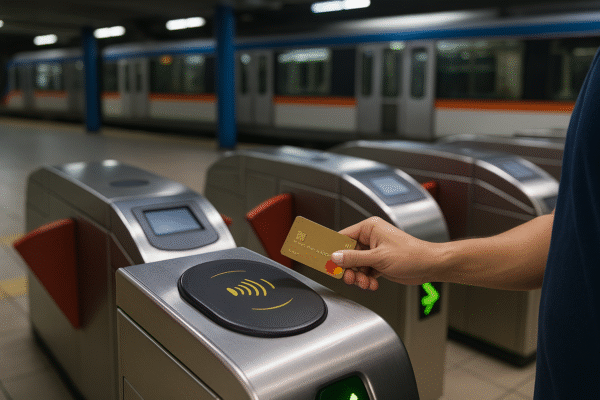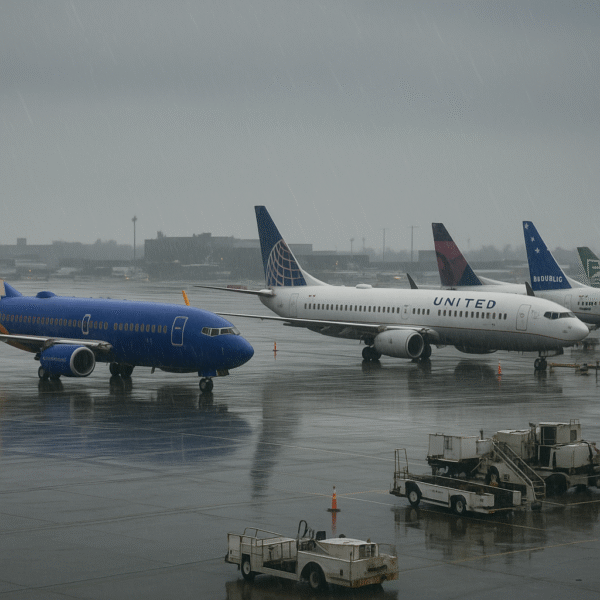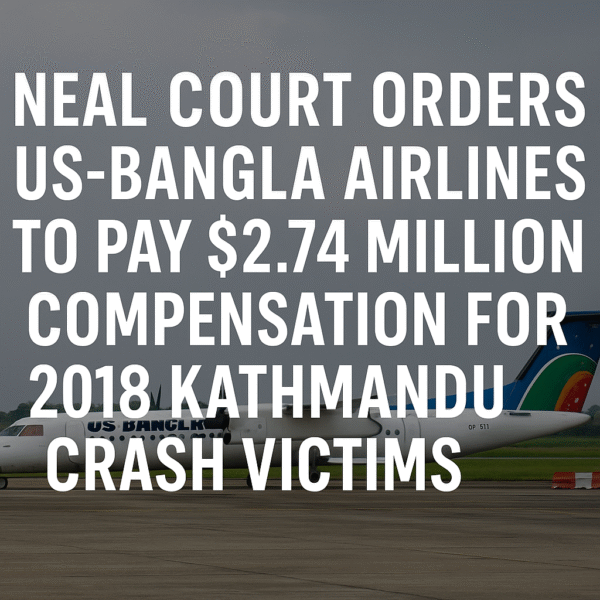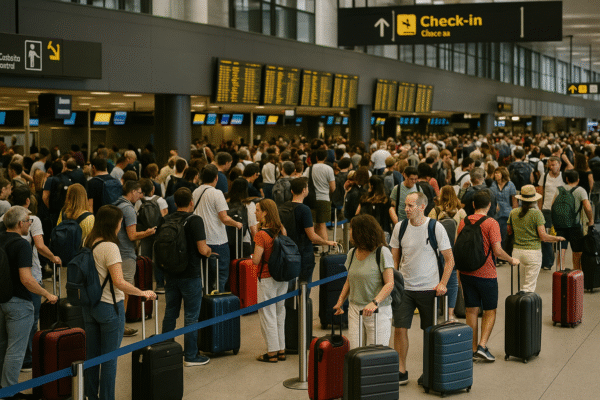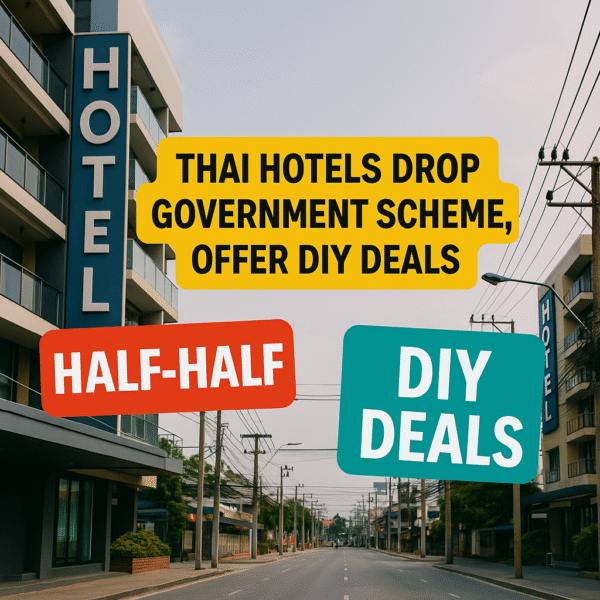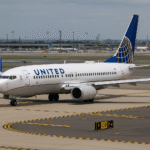Thailand’s domestic tourism recovery plan has hit a major snag. Hoteliers across key destinations such as Pattaya, Rayong, Koh Samui, and Khao Yai are backing out of the government-backed “Half-Half” (50-50) tourism campaign, citing systemic technical failures, payment uncertainty, and frustrating red tape.
The Half-Half travel scheme, launched by Thailand’s Ministry of Tourism and Sports in collaboration with the Digital Government Development Agency, was intended to stimulate low-season tourism by offering travelers 50% subsidies on hotel stays from July through October 2025. Instead, it has sparked discontent among hotel operators and disillusionment among domestic travelers.
Why the Half-Half Scheme Fell Apart
The Half-Half program was conceptually strong — a much-needed shot in the arm for hoteliers grappling with low occupancy rates during the monsoon months. However, in practice, it has been marred by delays, an outdated cash-only payment model, and a booking portal riddled with bugs and downtime.
Thailand Hotels Association (THA) President Thienprasit Chaipatranand expressed industry-wide frustration, saying, “Hotel owners are facing technical glitches daily, with no clear payment guarantees or consistent communication from authorities. Many simply cannot risk participating anymore.”
As of mid-July, less than 40% of the program’s 500,000 travel entitlements had been claimed, according to data from Thailand’s National Tourism Policy Committee. That leaves over 300,000 unclaimed — a stark indicator of public rejection.
Hotels Launch Direct-to-Consumer “Thai Price” Campaigns
In response, many properties in Pattaya, Khao Yai, Rayong, and Koh Samui have launched their own direct deals, branded as “Thai Price” campaigns. These promotions allow hoteliers to bypass the government’s troubled system, instead offering discounts via hotel websites, social media, and travel app platforms like Line and Facebook Messenger.
Hotels in Surat Thani and Koh Samui report better engagement with DIY deals compared to Half-Half participation. A manager of a boutique hotel in Samui explained, “The government system is broken. We’re now focusing on easy-to-book, app-friendly packages with clear pricing and no surprises.”
Booking Platforms Outperform Government Portals
Consumers are also speaking with their clicks. Most local travelers continue to favor private travel apps such as Agoda, Traveloka, and Booking.com — which offer seamless, card-based, mobile-friendly experiences. Even the 500-baht discount promised by the government isn’t enough to lure travelers away from reliable, fast platforms.
A Hua Hin hotel owner noted, “Travelers don’t want long forms and delays. They want instant confirmation and digital payment. The program’s cash-only model makes it feel outdated.”
Broader Implications for Thailand’s Tourism Industry
The collapse of the Half-Half campaign reveals deeper systemic issues — primarily the gap between digital expectations of modern travelers and the government’s outdated rollout infrastructure.
For an industry that contributes over 18% to Thailand’s GDP (pre-pandemic), according to the Tourism Authority of Thailand (TAT), trust and functionality are critical. Hotels left holding the bag on unconfirmed payments risk financial strain, especially smaller independent operators that rely on seasonal occupancy boosts.
Moreover, the failure to effectively roll out a national tourism stimulus may slow domestic economic revival, especially in non-urban destinations like Khao Yai and Rayong, which rely heavily on local tourists during the rainy season.
A Shift Toward Hotel Self-Sufficiency
The current landscape is prompting a new level of entrepreneurial agility among Thai hoteliers. From direct marketing via social media to personalized discount packages and loyalty rewards, hotels are adapting fast to the consumer’s digital-first mindset.
In Phuket and Krabi, similar local promotional initiatives are emerging. Some properties are partnering with influencers and regional bloggers to attract Thai families, retirees, and urban weekenders with curated experiences — a trend likely to outlast government intervention.
What’s Next for Thai Tourism Policy?
Tourism and Sports Minister Sorawong Thienthong recently hinted at a new 4-billion-baht stimulus package currently under review. But without a complete overhaul of the digital systems and communication channels, industry experts warn that another failed scheme could further erode public trust.
For future success, experts recommend:
- A reliable, mobile-first booking system integrated with secure e-payment options.
- Clear hotel eligibility guidelines and guaranteed reimbursement timelines.
- Real-time customer service support for travelers and hoteliers.
- Collaboration with app developers and hospitality tech companies to deliver a user-friendly interface.
Conclusion: Tech-Driven Resilience Amid Policy Failures
Thailand’s hospitality industry is showing resilience even as government interventions falter. From Pattaya to Samui, local hoteliers are proving they can pivot with technology and consumer-friendly deals that respond directly to market demands.
While the Half-Half program’s failure may temporarily slow recovery momentum, it has also sparked a new era of decentralization — one where independent hotels can flourish if equipped with the right digital tools and direct engagement strategies.
As the Tourism Authority of Thailand considers future frameworks, the lesson is clear: to revitalize domestic tourism, the country must meet travelers — and hoteliers — where they already are: online, mobile, and expecting a seamless experience.
For more travel news like this, keep reading Global Travel Wire

